
Sales Lead Generation: 75 Strategies, Ideas and Examples Part 2
12 Reasons People Buy, & How to Utilize Them for Sales Lead Gen
Source: “Why People Buy Stuff” from Copy Tactics
20. To Be Secure/Out of Fear
If you’re questioning the effectiveness of fear for motivation, just watch any 24-hour news cycle and I’m sure your concerns will be assuaged within a few moments.
Evolutionarily, we’re fearful creatures. We loved trees because they were safer than the ground; then we liked caves; then castles.
And now that we’re relatively safe from bears, we find other things to be afraid of:
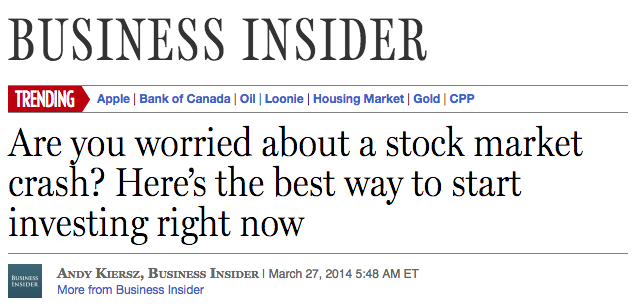
Even if we’ve not been previously aware of this fear, as soon as a business informs us we immediately take action to save ourselves from it.
21. To Make Money
This is one of the most straightforward ways to drive lead generation.
What’s the dollar value of your email address? $2? $5?
I bet it’s not more. So when someone promises to give you “The 3 Critical Keys to a $100,000 Blog” why would you even pause?

Money is the primary motivator for about 90% of the world (don’t you wish we could go back to bartering with livestock?).
So why shouldn’t it be a motivator or your business’ lead generation strategy?
22. To Save Money
Many studies have shown that we’re far more concerned about losing things that we have than we are about gaining the same amount.
You might think that the loss of $5 would make us equally unhappy as the gain of $5 makes us happy (the left graph). But you’d be wrong. It’s actually more like the graph on the right:

(Source: The Ultimate Guide to Conversion Rate Optimization)
So, not losing money matters, arguably, more to us than making it:
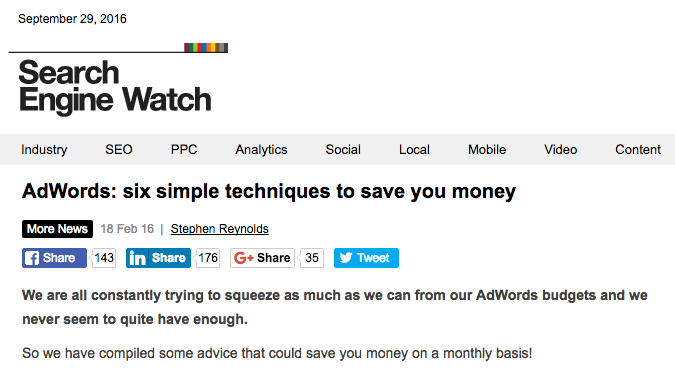
23. To Save Time
Money is time, except more.
If your business can save me time (and make it clear what I can do with that time), I’m sold.
- If you tell me that your service will do my laundry for me at no extra cost to me, allowing me to sit on my couch on Sundays and play videogames, I’m sold.
- If you tell me that your bookkeeping service will take my taxes and file them for me, allowing me to rest easy in April, I’m sold.
- If you tell me that your marketing automation service will send my marketing emails automatically, allowing me to set it and forget it and move on to do the 1000 other things I need to do to grow my business, I’m sold.

Time-saving is a great motivator for lead generation, particularly if you put some energy into breaking down what I can do with the time I’ve saved.
24. To Make Work Easier
Work is hard. Making it easier is a powerful motivator.
Almost every app on your phone, software platform or Chrome plugin is built on the idea of making your life easier. There’s a lot to do out there, a lot of things you now will grow your business. But doing them all is impossible.
- Creating a website without learning Ruby on Rails or HTML5 = WordPress
- Emailing 50,000 people in one go = Mailchimp
- Travelling to Costa Rica, picking, roasting and grinding your own coffee beans = Starbucks
Our entire society is built on making things that previously would have been impossible, easy.
If your business has found a new thing to make easy, let your prospective users know:
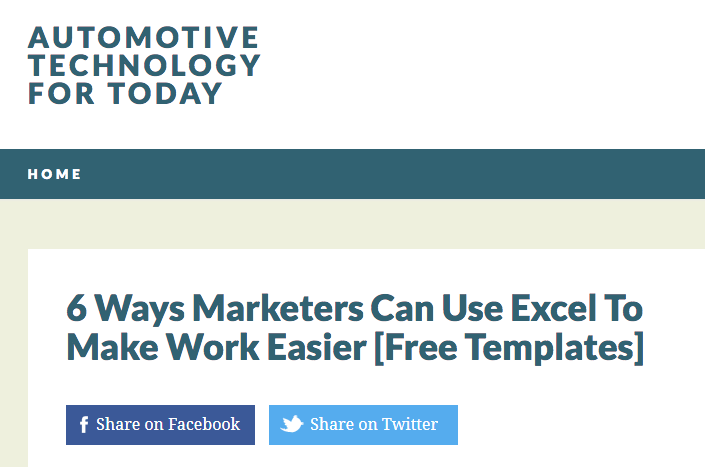
25. To Gain Knowledge
In 2009, a behavioral study showed “that subjects spent more scarce resources (either limited tokens or waiting time) to find out answers when they were more curious.”
When humans see a gap in what we know and what we don’t, filling that gap triggers pleasure receptors.
We love learning new things (thank god, otherwise we wouldn’t have moved far out of the cave).
This is, fundamentally, what makes educational content marketing so effective. Yes, we want to learn these things for a reason (see any of the motivational triggers above) but we also want to learn them because learning new things makes us feel good:

26. Because it’s Better than What our Friends Have
I feel like this is most-commonly expressed through TV size, but perhaps that’s just me and my friends. I consistently lose and it’s the cause of some pretty serious self-doubt on my part. I blame the fact that our 500 square foot apartment won’t fit a 65″ flat screen.
All of us are built to compare ourselves to the people around us. Evolutionarily this made sense. Before I’m going to fight you for the right to mate with this female I’m going to first size you up.
And the modern world hasn’t changed us one iota, except that we now have more things to compare ourselves against.
I submit as evidence…

If your brand can make your prospective leads look, feel or believe themselves to be better than someone else then you’re winning.
27. Because it’s New
We’re hard-wired to try new things. How do you think cheese came about?
A 2006 medical study from UCLA showed that seeing something new triggers our substantia nigra (don’t worry, this won’t be on the test), which is the part of our brain responsible for regulating motivation and reward-processing. Ever heard of dopamine? Its release is triggered by novelty.
In other words, we’re wired to become intrigued.

If your business is releasing a new tool or has new information, don’t hide it. Yell the word “New!” from the top of the building.
Source: The Ultimate Guide to Conversion Rate Optimization
28. Because We Trust The Brand
It’s the focus of content marketing. For many businesses it’s less about ranking in Google or generating leads as it is about driving trust with prospective customers. And even if your focus is SEO or lead generation, driving trust is an essential part.
If your prospective customer or user trusts you then they’re far more likely to buy from you. A company’s products have higher subjective value if the customer trusts them based on previous experience, perceived expertise or honesty.
Just look at Buffer’s transparency policy. Here’s an example when they told the world that they were struggling a bit financially:
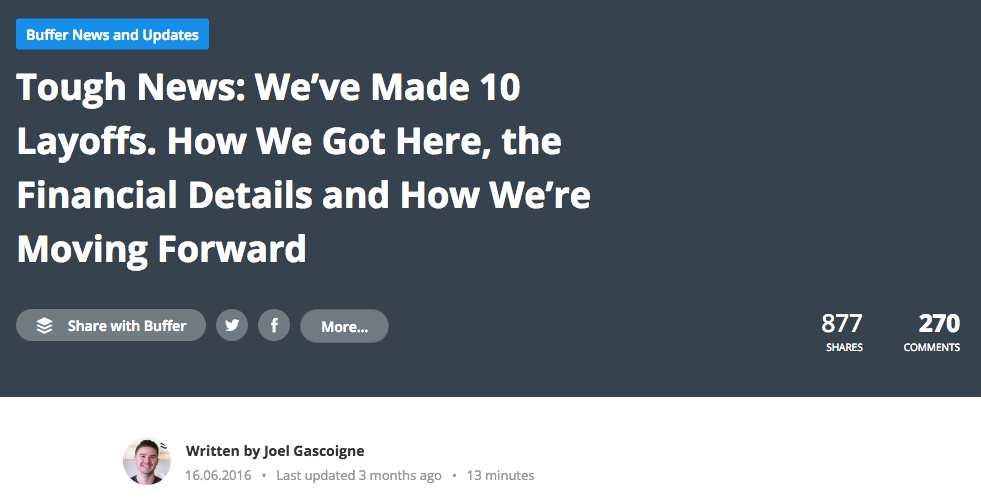
This kind of thing makes prospective and existing customers feel like Buffer’s not hiding anything from them. They’re the same with salary, server downtime and everything else.
29. Out of Guilt/Reciprocity
Why do free trials work so well?
Well, it turns out there’s some science behind it. Free trials are a form of “sampling” (see Costco for a sample of this. Get it?)
Sampling creates a feeling of obligation (even guilt) towards the source of the sample.
The source of the sample has given you something for free. People are built to give something in return.
Dan Ariely, a behavioral economist from Duke, phrases it this way:
“Reciprocity is a very, very strong instinct. If somebody does something for you, you really feel a rather surprisingly strong obligation to do something back for them.”
Costco – Average Percentage Increase in Sales After Product Samples in 2014, by Product Type:
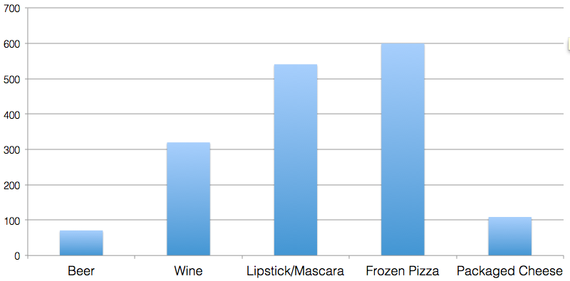
Source: The Ultimate Guide to Conversion Rate Optimization & The Atlantic
30. Because of a Limited-time Discount
Limited-time offers drive urgency. And urgency has been shown to improve landing page conversion rates by 147%, so that’s that.
Why?
Because your website visitors are lazy. It is infinitely easier to not take an action than it is to take it.
Your business doesn’t just need to give your visitors a reason to convert. They need to give them a reason why not converting is a bad decision.
Urgency gives you that.

A few ways to create urgency:
- A countdown timer
- The word “now”
- Limited time
- Limited availability
- Limited stock
- Reserve your seat (implied urgency)
For more on this, check out “5 Ways You Can Create Urgency on Your Landing Page”
31. It’s Aspirational
This one is a bit more complicated and a bit more controversial, so let me give you an example before we dive in. This is the main headline for the super successful Dollar Beard Club:

And here’s the homepage for Old Spice deodorant:
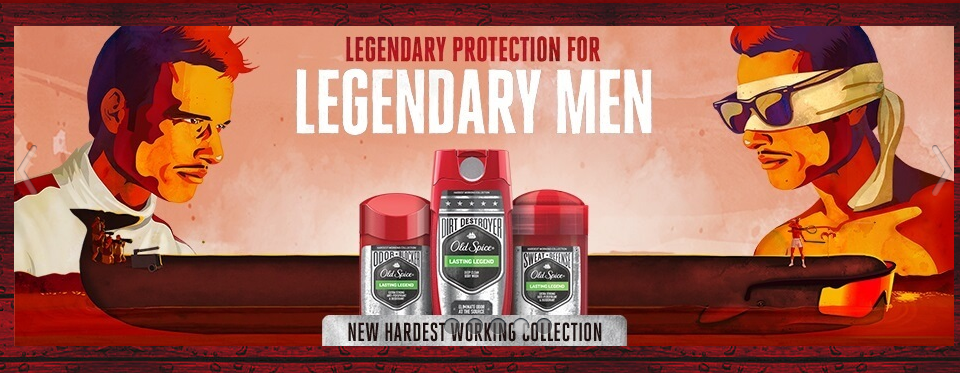
“Be better” is a powerful way to motivate your prospective leads and clients. “Our product/service/tool can get you there.”
Want to be a man? Want to be a legendary man? Of course you do. What man wouldn’t?
These products will get you there.
A few more realistic examples (that aren’t for deodorant companies):
- Become a Facebook marketing expert with this 4-week course
- Look as good as you feel with this 4-week fitness course
- Reach 100,000 monthly blog readers with this webinar series
- Etc.
6 Proven Ways to Turn Marketing Leads into Qualified Sales Leads
Let’s check out a few statistics which make it pretty clear about how important it is to nurture your leads before sending them to sales:
- 50% of leads are qualified but not yet ready to buy. (Source: Gleanster Research)
- Nurtured leads produce, on average, a 20% increase in sales opportunities versus non-nurtured leads. (Source: DemandGen Report)
- Companies that excel at lead nurturing have 9% more sales reps making quota. (Source: CSO Insight)
- Nurtured leads make 47% larger purchases than non-nurtured leads. (Source: The Annuitas Group)
Here are 6 strategies you can use to be sure the leads you send over to your sales team areready to buy…
32. Promote a Limited Time Offer at the End of Webinar
If you’re running educational webinars, you should be at least showing screenshots or video from your tool of how those strategies can be implemented. So you’re educating prospective customers both about how to achieve their goals and, subtly, about the fact that your software or service makes it easy.
Then, at the end of your webinar, showcase a limited-time offer which propels your viewers down the sales funnel, either with a promotion (like the one below) or other gated content – perhaps a secondary, more product-focused webinar.

Webinars are an awesome way to nurture leads as it’s not just about education, but creating relationships. A webinar puts your customer face to face with a real person at your company. If they’re an expert, friendly and show they genuinely want to help prospective users succeed, then there’s a substantially higher chance of the viewers converting down the line than if they’ve just downloaded an ebook or two.
33. Determine your Highest Value Content
Some of your articles are going to be TOFU – useful for driving traffic and brand awareness.
Some are MOFU – useful for introducing people to your brand’s service and showcasing what you’re capable of.
And you need to know which is which, and determining the value of each.
Ask yourselves the following questions (analytics should help you answer them):
- Which content gets viewed the most?
- Which content gets shared the most?
- Which content drives the most early-stage leads (content upgrade leads, perhaps)?
- Which content drives the most later-stage leads (webinar conversion)
- Which content drives the most demo requests/signups/purchases?
And then you need to determine how you can take the most advantage of those articles. If they’re high traffic can you add lead generation tools? If they’re high lead generation can you increase their traffic?
34. Follow up with Leads who Visits your Pricing Page Multiple Times Within 15 days
These are usually (at least at Wishpond) referred to as “Hot Leads.”
These are people who have expressed serious interest in not just what you do, but what you cost.
A single pricing page visit may have been an accident or to check you against the competitor they were planning on going with.
But multiple visits within a relatively short time period (2 weeks or so) means they’re shopping around and are seriously thinking about a paid conversion.

If that’s happening, the biggest mistake you can make is to let that person go. You need to reach out and do whatever it takes to close before they find a reason not to.
35-50% of sales go to the vendor that responds first. (Source: InsideSales.com)
Marketing automation software will allow you to trigger an internal email to a sales associate to make a call, an external email to ask if the person wants to jump on one, an entry popup which offers a limited-time promotion, or any number of other awesome strategies that turn “hot leads” into hot customers.
35. Use a 3-to-1 Ratio of Templated to Personal Format Emails
If all your emails are sent with a personal style, any hint that they’re not automatic (an inaccurate merge tag, a poorly-scheduled mailout, etc), it’ll become extremely apparent that they’re automated.
Rather than all personal, we’ve found that the best ratio is 3 templated to 1 personal (making the personal email rarer and subjectively more valuable).
Another best practice for this strategy is to add a P.S. prompting them to reply to your personal email and to actually monitor the replies.
36. Send Next-step ‘Content Upgrade’ Emails After Leads Visit Specific Blog Posts
Marketing automation is a powerful thing. And here’s a really cool use-case for it.
Any good marketing automation tool knows when your leads visit a specific blog article. So, alongside having a relevant content upgrade within that article, you can also send them a follow-up email promoting the content upgrade without being gated.
If you’ve already generated the lead, there’s no point in gating their content upgrade (and having to fill out a form they’ve already filled out might dissuade them from getting the value of the gated content).
Just send an email saying…
“Hey there,
Just noticed you checked out my new article “50 Ways to Drive Website Traffic.” I’ve email-gated the checklist for that article, but, as a member of our [brand name] family, I wouldn’t expect you to fill out a form you’ve already filled out!
Please find the checklist attached.
And have a good one!”
37. Segment Leads Based on Use-case for Your Solution
Just because you have a single product or service doesn’t mean your prospective customers will use it for the same reason.
And you need to talk to them based on their reason for purchasing, not simply because they’re customers.
For example:
- One customer may purchase a vacuum because it gives them a cleaner floor than competitors.
- Another may buy the same vacuum because it has a longer-lasting battery and they have a large house and don’t want to keep plugging and unplugging from the wall.
- Another may buy the same vacuum because it’s lighter than competitors and they can use it without getting tired.
My recommendation for this is to include a simple and quick form on your “Thank you for Purchasing!” page which prompts customers to quickly choose from a dropdown of common reasons for purchasing.
And then, down the line when you have a new product or promotion, create several different mailouts which talk to customers based on their specific use-case:
- We’re super excited to be giving away our lightest vacuum ever, the CleanoMatic3000. Existing customers get 10% off until Sunday the 31st.
- Now with a battery you’ll only need to charge once a month, our new CleanoMatic3000 is on sale!
- Since 1924 we’ve been giving you the cleanest floors in the neighborhood. We’re proud to release our most effective cleaner ever. Get the CleanoMatic300 at 10% off until Sunday the 31st.
38. Use Inspirational Content to Move Leads from Early-stage to Late-stage
I absolutely love this image from Jason Fried from UserOnboard:
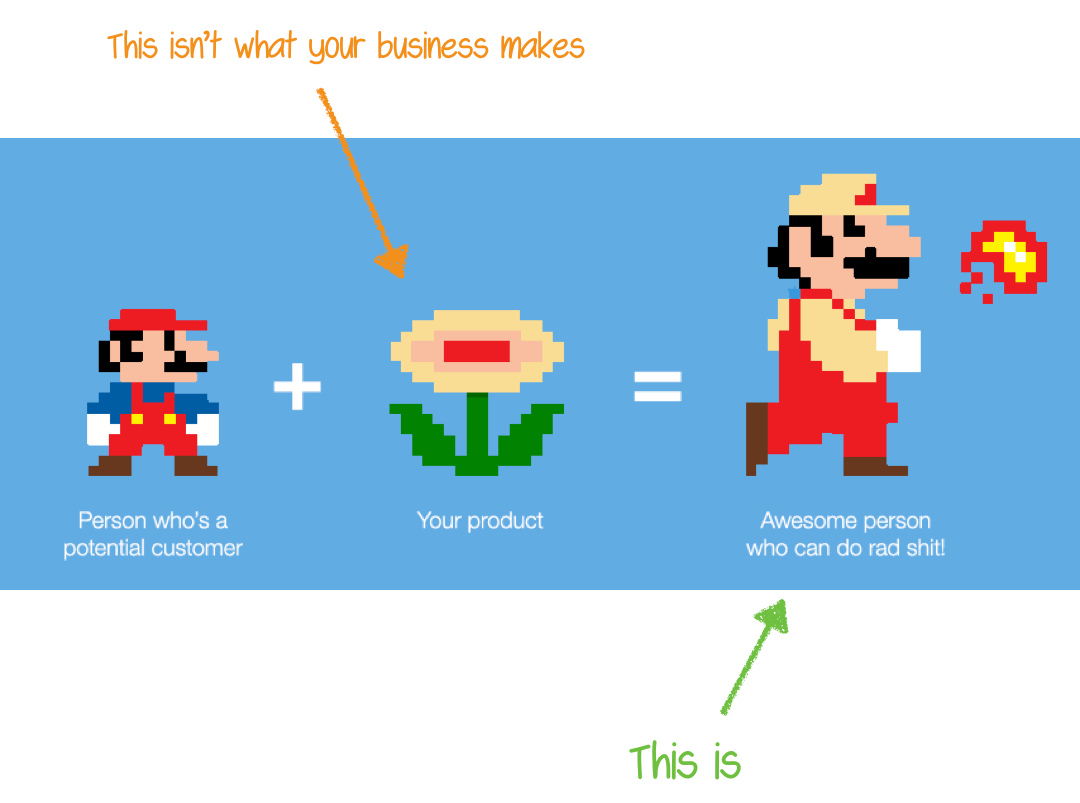
Image via UserOnboard
Your business doesn’t make a product, it makes a result.
- If you’re an auto repair company, you don’t change your customer’s car for winter tires, you keep their family safe on unsafe roads.
- If you’re a bookkeeping service, you don’t do your client’s yearly audit, you make it so they can relax, content in their faith that things they don’t understand will be taken care of.
- If you sell lead generation software, you don’t create landing page templates, you save your customers valuable time, allowing them to spend it doing what they love.
To turn early-stage leads into middle or bottom-stage leads, show examples and case studies (segmented to their industry and interests) of businesses who have seen the benefit of your service, tool or product.

Wishpond’s 1000+ Lead Generation
Strategies, Ideas, Best Practices & Examples
Click below to download the most comprehensive collection of lead generation strategies and examples ever compiled. Completely free.